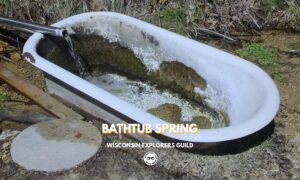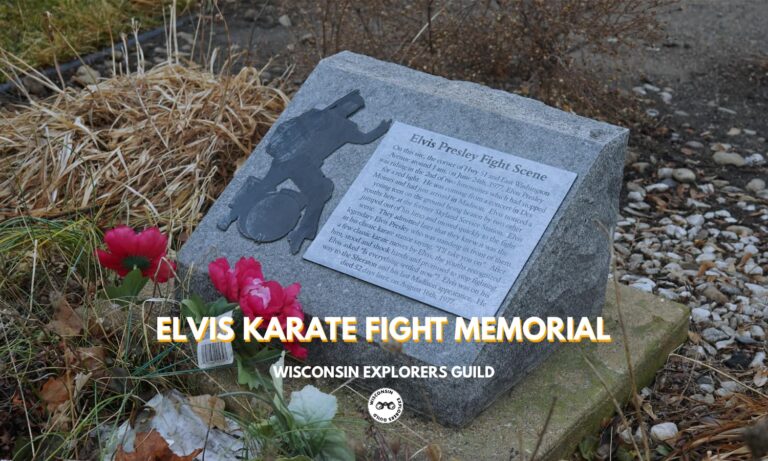If you’ve ever spent a lazy afternoon floating down the Kickapoo River in southwestern Wisconsin, there’s a good chance you’ve stopped at the small town of Rockton for some refreshment at the almost world-famous Rockton Bar.
But you probably didn’t cross the street to visit the Rockton Cemetery. So you probably missed the pair of historic mill stones that helped to (literally) put Rockton on the map.
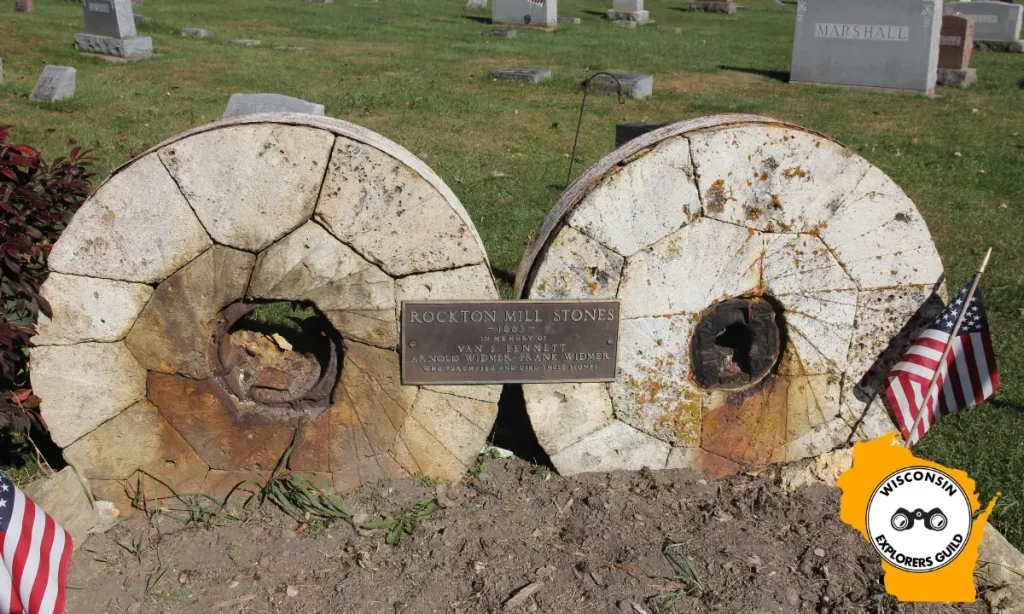
Rockton Mill Stones, Rockton Cemetery
The Rockton Mill Stones here are older than Rockton itself. The twin stones, resting on edge and side-by-side at the southwest corner of the cemetery, are not easily overlooked. They sit just below the Rockton Cemetery sign.
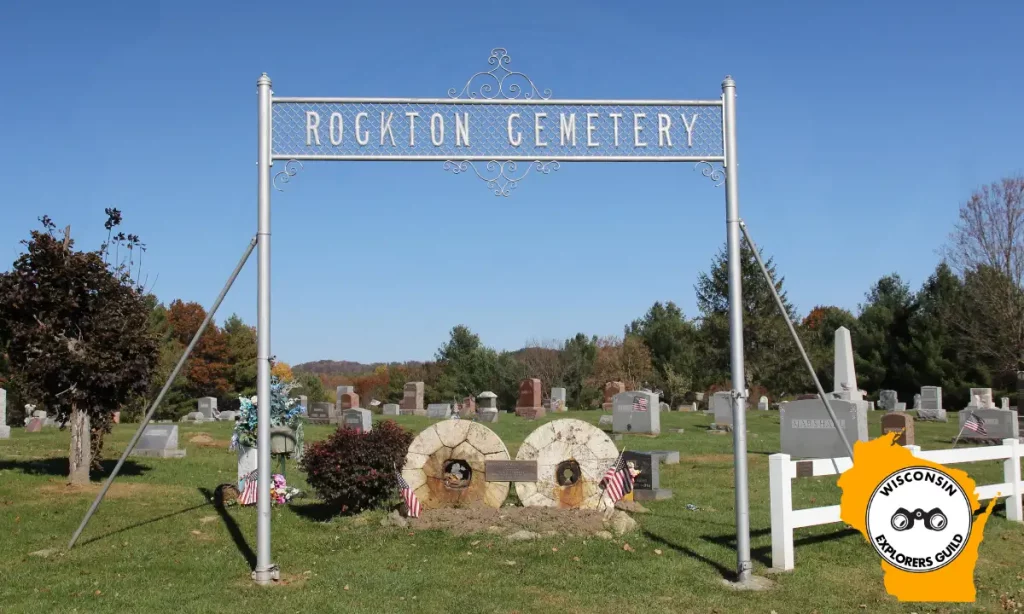
The informational plaque that’s attached to the stones provides a few details about the importance of these artifacts in Rockton’s history. It reads:
Rockton Mill Stones
— 1883 —
In memory of
Van S. Bennett
Arnold Widmer • Frank Widmer
Who purchased and used these stones
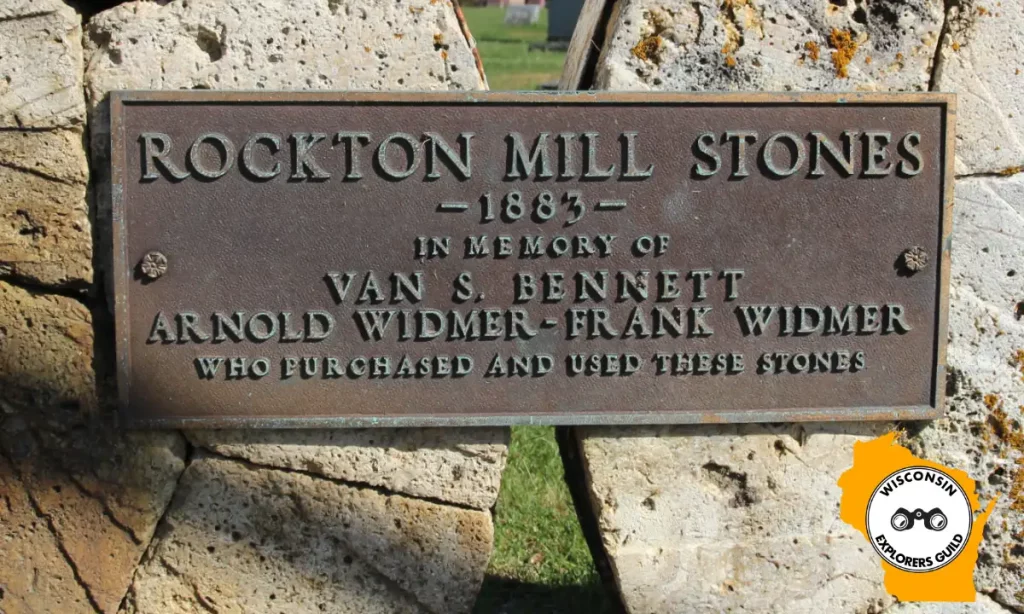
Our Latest Exploration …
- Bathtub SpringIn southwestern Wisconsin you can find an endless supply of fresh water flowing into a roadside bathtub — a place known as the Bathtub Spring.
Van S. Bennett
These mill stones were used in the local gristmill before Rockton was officially founded. In 1866, Civil War Veteran (Lieutenant in the 12th Wisconsin Infantry Regiment) Van Swearengen Bennett bought the land that would become the town of Rockton.
This included the established gristmill built on the bank of the Kickapoo River, not too far from where Canoe Landing 12 is today. If you’ve ever used that landing while canoeing down the Kicakpoo, you’ve walked right over where the mill once stood.
You can see where the mill was once located in the 1896 Plat Book of Vernon County .
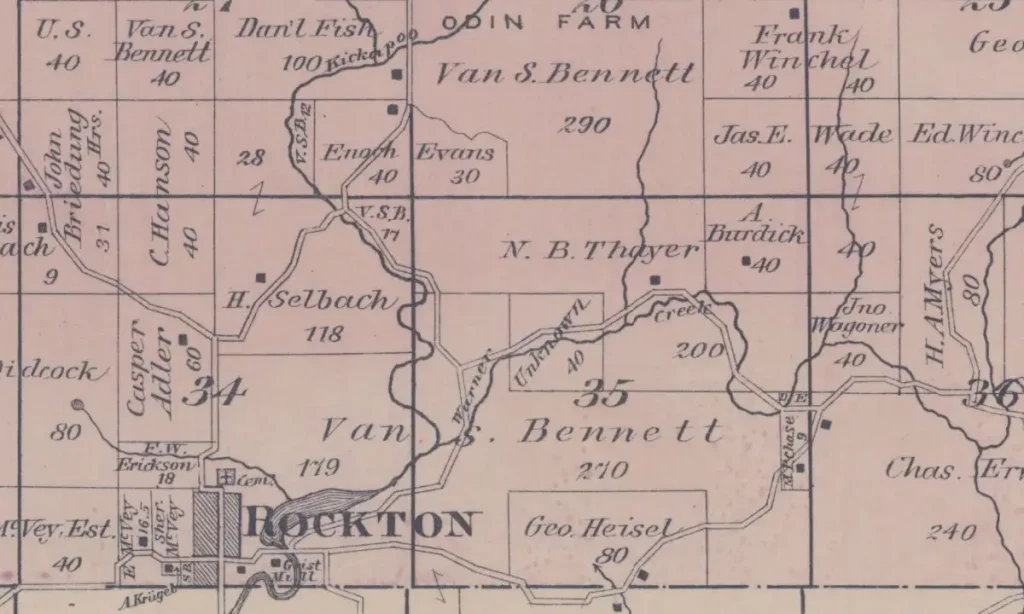
Although the unincorporated town is small today, back in 1866, Bennett, who was the chairman of the town board and a justice of the peace, had big plans for Rockton. He built a school house, lumber mill, and a general store before he officially platted out Rockton in 1873.
Van Bennett also served in both the Wisconsin State Assembly and Wisconsin State Senate. He died in 1914 at age 73, the day after he was kicked by a horse. You can see his grave in the Rockton Cemetery, just behind the huge obelisk plot marker for the Bennett family.
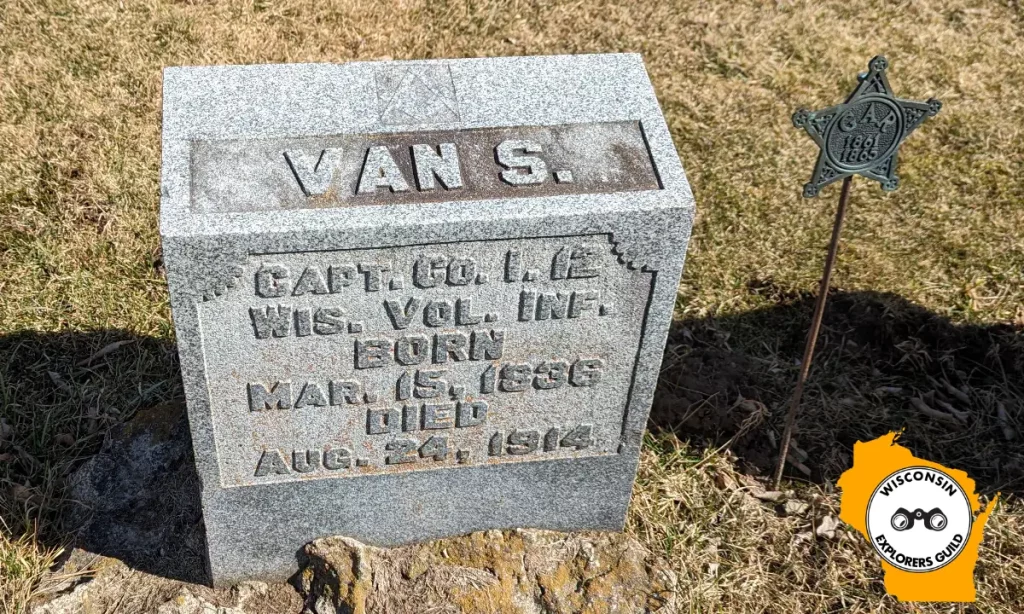
Arnold Widmer and Frank Widmer
The other two gentlemen on the plaque — Arnold Widmer, an immigrant from Richterswil, Switzerland who arrived in the United States on June 19, 1868 with his his son Frank Widmer — lived on an 80-acre plot just south and east of Rockton in Stark Township.
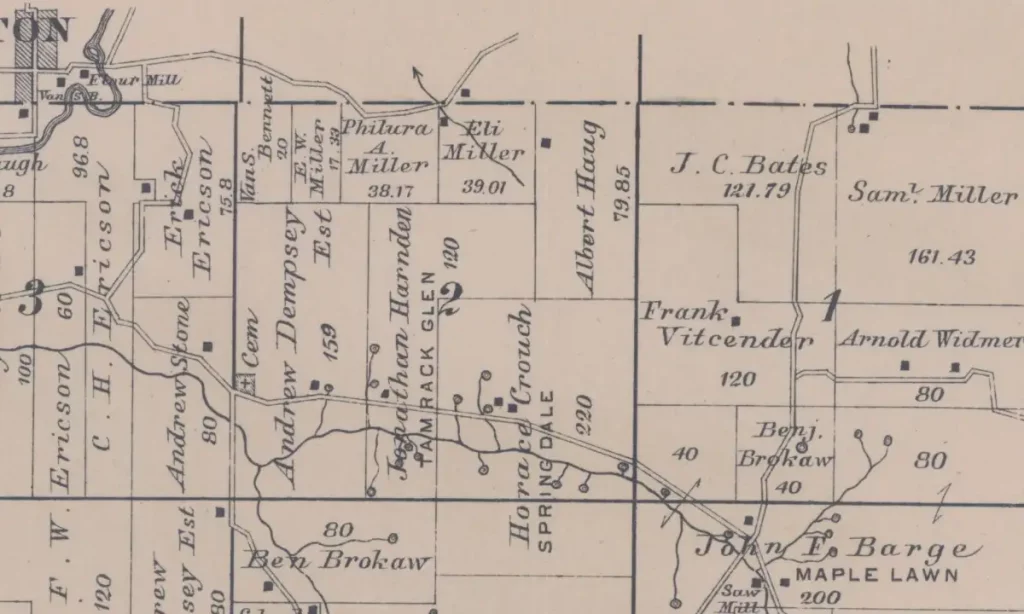
Arnold died in 1924 and he, too, was buried in Rockton Cemetery, not too far from Mr. Bennett.
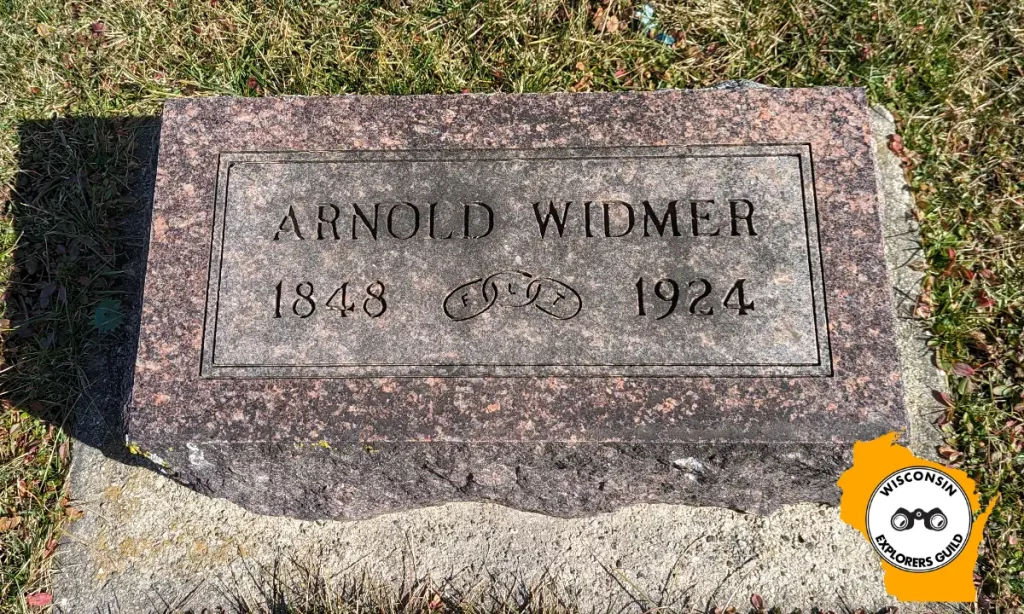
According to the December 1942 issue of the Wisconsin Magazine of History, Arnold’s son Frank and Mrs. J.S. Earl gave the then 77-year-old mill to the Rockton Community. It was subsequently torn down and the materials were used to build a new Community Center that was dedicated on August 9, 1942.
Rockton Mill Stones, Vernon County Museum
But one pair of Rockton Mill Stones isn’t enough for Vernon County. Fifteen miles southwest of Rockton (as the crow flies), another matched set of mill stones that were used at the Rockton mill sit outside in Viroqua.
Though this set, on display just outside the back door of the Vernon County Museum on Viroqua’s East South Street, is a little more worn down and weathered than the set in Rockton.
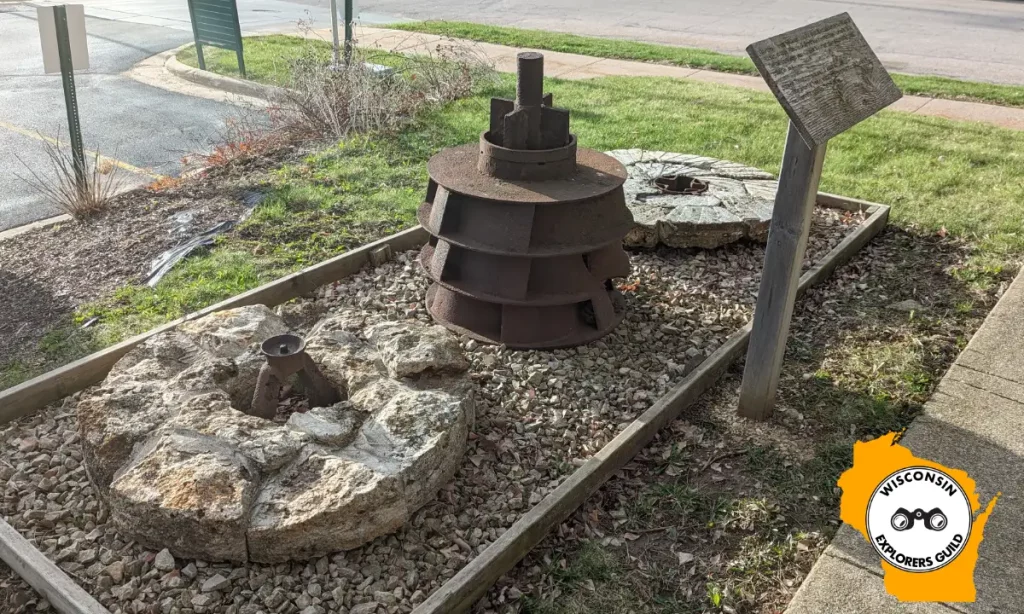
There is a weather-worn plaque that explains the origin of the stones and how the turbine was used. The faded inscription reads:
On either side sits millstones from the gristmill established in the village of
Rockton in 1865. This pair of stones was imported from France in 1873.
The millstones were placed one on top of the other and used to grind
grain into flour.Between the millstones is a set of water turbines.
A turbine placed in flowing water provides power to a mill, turning the
machinery that operates the millstones.

Rockton Mill Stones
- Intersection of County P and Lisney Rd, Rockton, WI
- GPS Coordinates: 43.642371, -90.602372
- What3Words: ///frill.widened.float

